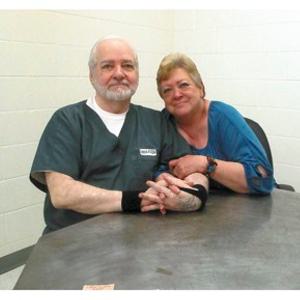
On Tuesday, January 30, Ohio Attorney General Dave Yost announced new legislation to authorize the use of nitrogen gas in executions in the state. Joined by several Republican state representatives and Louis Tobin of the Ohio Prosecuting Attorneys Association, AG Yost said that he is seeking to “kickstart” Ohio’s death penalty after a six-year pause in executions due to difficulties obtaining lethal injection drugs. “The status quo is unacceptable,” he said. According to the text of the proposed bill, H.B. 392, a prisoner could elect lethal injection or nitrogen hypoxia as their preferred method of execution, but nitrogen hypoxia would be used if lethal injection becomes unavailable. The bill also includes criminal penalties for anyone who “recklessly” discloses “execution identifying information,” defined as personal details about execution team members and people involved in the supply chain of execution materials. Anyone disclosing such information would be guilty of a fourth-degree misdemeanor.
The bill follows the January 25 execution of Kenneth Smith in Alabama, the first state to use nitrogen gas in an execution. Media witnesses at Mr. Smith’s execution reported that he “shook and writhed,” appearing to be in distress for several minutes as his body was deprived of oxygen. At the press conference announcing the new legislation, officials asserted that this method was “humane” and would be the “most palatable” for Ohio to use.
In response to media questions about the use of the death penalty in Ohio, AG Yost said that death-row exonerations proved that the “system works.” However, DPIC research shows that 10 of 11 Ohio death-row exonerations involved official misconduct, a finding at odds with his statement.
Governor Mike DeWine and former director of the Ohio Department of Rehabilitation and Correction Gary Mohr were among the prominent figures who expressed concerns about the proposed legislation following the press conference. An execution method should be “a proven method that peacefully ends life,” said former director Mohr. He said that he was “not convinced” that nitrogen gas “meets [his] belief that people shouldn’t struggle,” and noted that staff and viewers would be traumatized watching a person struggle during an execution. Mr. Mohr supervised 15 executions in his previous role and has since felt misgivings about the death penalty. “Having been personally involved in not just executions but 50 years of this work, and being a prison warden for 12 years and seeing other people who have life sentences with very, very similar types of acts that generated that sentence, I’m not convinced at this point that we’re executing the worst of the worst,” he said.
Similarly, when asked about the new legislation, Governor DeWine reiterated his doubts about the death penalty’s efficacy. He declined to comment on nitrogen hypoxia, citing the pending legislation, but did say he did not know much about the method since it had only been used once. “If you had 10 things to do to reduce crime, 10 things to save lives, the death penalty would probably not be on that top 10 list,” he said. He noted that the average time between offense and execution “does raise a serious question of whether or not [the death penalty] is in fact a deterrent.”
H.B. 392 competes with a package of death penalty abolition bills introduced by a bipartisan group of state representatives in 2023. Representative Jean Schmidt (R), a sponsor, said at the time that “life begins at conception and it ends with natural death…the death penalty is anything but natural.” The bills, S.B. 101 and H.B. 259, are currently pending. Senate Minority Leader Nickie Antonio (D), a sponsor of S.B. 101, criticized H.B. 392 following Tuesday’s press conference. Nitrogen gas is “a method so unconscionable that veterinarians reject its use to euthanize animals,” she said. “Ohio should show moral leadership and reject the death penalty outright rather than fall in line with this misguided policy.”
Sources
Nicholas Bogel-Burroughs, A Select Few Witnessed Alabama’s Nitrogen Execution. This Is What They Saw., New York Times, February 1, 2024; Karen Kasler, Former Ohio prisons director concerned about use of nitrogen suffocation in executions, Statehouse News Bureau, January 31, 2024; Morgan Trau, Ohio Attorney General Dave Yost promotes bill to start using nitrogen gas for executions, Ohio Capital Journal, January 31, 2024; Gustaf Kilander, Ohio Republicans are preparing nitrogen gas executions after Alabama killed Kenneth Eugene Smith, The Independent, January 31, 2024;Mary Kekatos, Ohio lawmakers introduce bill to allow execution by nitrogen gas following Alabama, January 30, 3034; Julie Carr Smyth, Could Ohio be the next state to use nitrogen gas in executions? A new method would end a 5‑year halt, Associated Press, January 30, 2024; Darrel Rowland, Ohio could follow Alabama’s lead, begin nitrogen gas executions under proposed bill, Dayton 24/7 Now, January 30, 2024; H.B. 392; S.B. 101; H.B. 259.
Methods of Execution
Mar 12, 2024

Three Largest Nitrogen Gas Manufacturers in the U.S. Prohibit Products from Use in Executions
Methods of Execution
Feb 29, 2024



